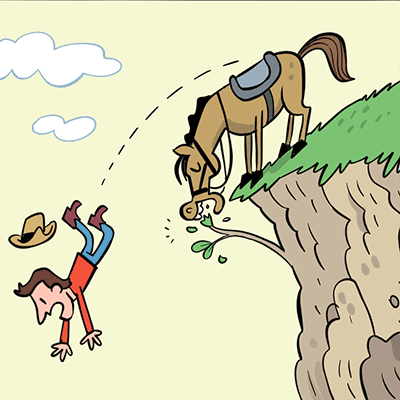What is Cause and Effect?
Cause and effect is how you would describe the relation between two (or more) events and how they, in turn, affect each other. One thing leads to another. It may seem like a pretty tough concept to teach to kids, but it’s actually already a big part of their lives.They just may not know it yet!
Teaching the concept of cause and effect to kids may seem daunting but really it’s as simple as “What happened?” and “Why?”. Basically, the things we do make other things happen. Actions have consequences.
The effect is what happened:
Tommy got soaked.
The cause is why:
Because he forgot his raincoat.
Why Teach Cause and Effect?
Teaching cause and effect is a great way for students to learn critical thinking skills and concepts like logic, reason and accountability. Not only can it help in terms of reading comprehension, and writing but also with language acquisition and general life skills like problem solving and personal responsibility.
Logic
The study of cause and effect, with repetition, teaches the probability of outcomes and logical pattern recognition. If you kick a ball, it will roll. You would never see a ball get kicked and just not move!! Hmmmm, except maybe a bowling ball. OUCH!
Reason
Things that happen, happen for a reason. That’s what cause and effect is all about! The Sun comes up because the Earth spins around. Ditto for the Moon!
Reading and Writing
Comprehensive reading isn’t just about recognizing letters and sounding out words. It’s about understanding the ideas those words wish to convey. An apple fell from the tree and bonked Isaac on the head! The cause in this case is the apple falling from the tree. The effect is that it hit Isaac on the head. The subtext is that it may have hurt and probably wasn’t his favorite thing that happened that day.
Same thing with writing, As a child’s ability to convey ideas in writing gets better, it naturally incorporates cause and effect.
Mommy went to the store to buy apples. The cause is Mommy going to the store. The effect is that now we have apples. But the writing isn’t just a straightforward statement. The cause and effect is implied.
Language Skills
Much of the language used in teaching cause and effect surrounds important and very common words and conjunctions like if, then, or and because. Especially because!! It literally means by the cause of. What more can you ask for?
Responsibility
Maybe most importantly, students can learn the concept that people can also be the cause and create the effect:
The candles on the birthday cake went out because Jesse blew on them.
Causality makes students realize that they have an effect on the world and, as such, that they have a responsibility to control that effect.
Activities
- Read Alouds: Many stories exemplify cause and effect through morality tales. Think the “Boy who cried wolf” or “Chicken Little”. Read along with the students and have them identify what has happened and why.
- Real-Life Examples: Have the students think of things that have or could happen at, say, home or school. What was the outcome and what do they think was the cause? “Ryan threw the ball onto the roof. Now we have no ball to play with.”
- Cause and Effect Games: Games can be great teaching tools. Whether it’s matching cards, some with cause scenarios, others with corresponding effects, or sequenced pictographs, games can be very useful to help young people grasp the concept of cause and effect.
- Chain Reaction: Create a chain reaction activity where students start with a cause and brainstorm the possible effects. Then, they choose one of the effects and brainstorm the next set of possible causes, creating a cause and effect chain.
- Story Writing: Have the students create their own stories. What do the characters do? What is their effect on the story? What follows in turn after that?
- Science Experiments: Try out some science experiments that illustrate cause and effect relationships. For example, demonstrate how mixing vinegar and baking soda causes a chemical reaction and leads to the eruption of a volcano.

